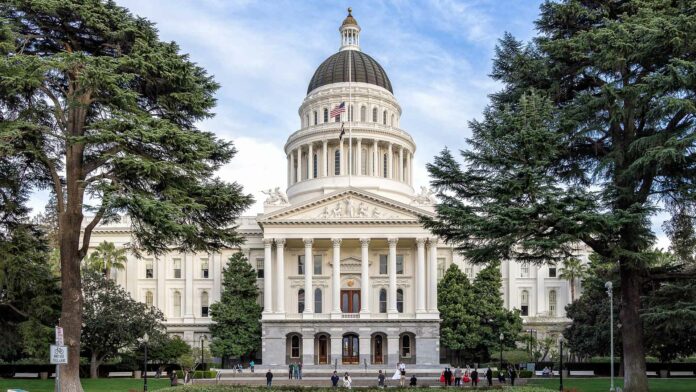Yearly increases in average temperatures pose dangers to public health
The effects of climate change can be seen around the world. But events, such as the fires raging in Australia and the Amazon rainforest and the loss of sea ice in the arctic, while impactful, do not directly affect individuals outside of the regions. This makes it difficult to contextualize how climate change will impact us.
A comprehensive regional report on the Sacramento Valley clearly defines the changes we can expect to see while providing adaptation measures. The report is authored almost entirely by UC Davis researchers and professors as part of California’s fourth climate change assessment report. Information from various sectors is gathered to create a clear and concise review that addresses the most pressing climate impacts on Sacramento and the surrounding areas.
Climate change is expected to increase the average temperatures in the region by 2.7 to 10.8 degrees Farenheit between the months of July and September. In addition to higher summer temperatures, heatwaves are expected to be more frequent and intense. Heatwaves are predicted to have both higher daytime and nighttime temperatures along with fewer cooling degree days, which are crucial during these periods of intense heat.
In the water system, the greatest threat will be from droughts. As temperatures get hotter and weather extremes occur more often, the Sacramento Valley will be faced with the long term dangers of droughts. The water supply will be further weakened due to increases in population size. As Sacramento continues to grow and the water supply becomes unpredictable, the need for potable water will rise.
“When you have population growth in any part of the state, that puts stress on water resources and is an underlying exacerbator,” said Hannah Safford, a researcher for the policy institute for energy, environment and the economy.
The impacts of these changes to the Sacramento Valley will be profound and felt across a wide range of sectors. When looking specifically at public health, many people are at risk. A higher number of extremely hot days will result in more frequent heat-related stress, illness and human mortality.
Additionally, higher temperatures increase the rate of ground level ozone formation, a pollutant that poses many health risks when exposed to it. Once formed, ozone often stays in Sacramento due to the geography of the valley.
“The main air pollutant that causes harm to health is ozone and as temperature goes up the rate of ozone increases,” said Colin Murphy, a deputy director of the policy institute for energy, environment and the economy. “The central valley has the worst ozone and other types of air pollutants.”
The danger posed to public health will disproportionately affect already disadvantaged communities who lack access to crucial health care. The residential locations of lower-income communities often have higher rates of pollutants in the air, further putting these communities at a higher risk than those in affluent areas.
“Ozone tends to be a regional pollutant but the other pollutants such as particulates are at a much more local level and there is strong correlation between where the particulates are and disadvantaged communities,” Murphy said.
Another major issue affecting disadvantaged urban areas are urban heat islands. These “islands” are areas with very few trees, little shade and buildings with surfaces that increase temperatures through absorbing heat and releasing it into the air. As temperatures increase in Sacramento due to climate change, temperatures in urban heat islands will rise even more.
The threats to public health are also more significant in urban heat islands as the heat is inescapable. Urban heat islands can result in summer temperatures up to 7 degrees Fahrenheit warmer than the regional average, according to the regional report. Additionally, the islands retain these high temperatures into the night, which poses dangers to residents without air conditioning as there are no periods in the day with a cooling effect.
Action is already underway to reduce urban heat islands through the Sacramento Tree Foundation. One of the foundations main programs, NeighborWood, works to address inequity through planting more trees and increasing green spaces in urban heat islands.
“NeighborWoods goes into communities that have been historically not as well canopied as other neighborhoods,” said Jordan Cherry, the Sacramento Shade coordinator. “They don’t have the same old growth urban tree canopy that provides so much benefit.”
Another branch of the foundation, the Sacramento Shade Program gives 10 free trees to any customers of the Sacramento Municipal Utility District. This program serves to bring more trees to Sacramento, which will not only reduce temperatures but also sequester carbon.
In terms of drought prevention, Safford hopes to see a future where recycling and reusing water becomes the norm. As a more cost-effective way to obtain water than desalination, it can become an extremely beneficial technology for California to implement.
“If you can increase the amount of water you are recycling and reusing that would supply a lot more people with clean potable water,” Safford said.
As groundwater reserves become spares and the amount of water from precipitation becomes highly variable, obtaining water through a dependable mechanism is crucial. With policy that promotes and advocates for recycling and reusing water, California can become more resistant to the threats posed to the water system.
Climate change will also put stress on all sectors of society and the economy. Effective policies that work to reduce carbon emissions and make California greener are already underway, yet they will not stop the broader issue of climate change. Although it may seem like a never-ending problem, Safford reminds us that when the alternative is to do nothing, any action is extremely needed and beneficial.
“You are left with two choices; you can try and do whatever you can or you can not,” said Safford. “But when the alternative is to just give up and not try at all, you must just try whatever possible.”
Written by: Alma Meckler-Pacheco — science@theaggie.org




